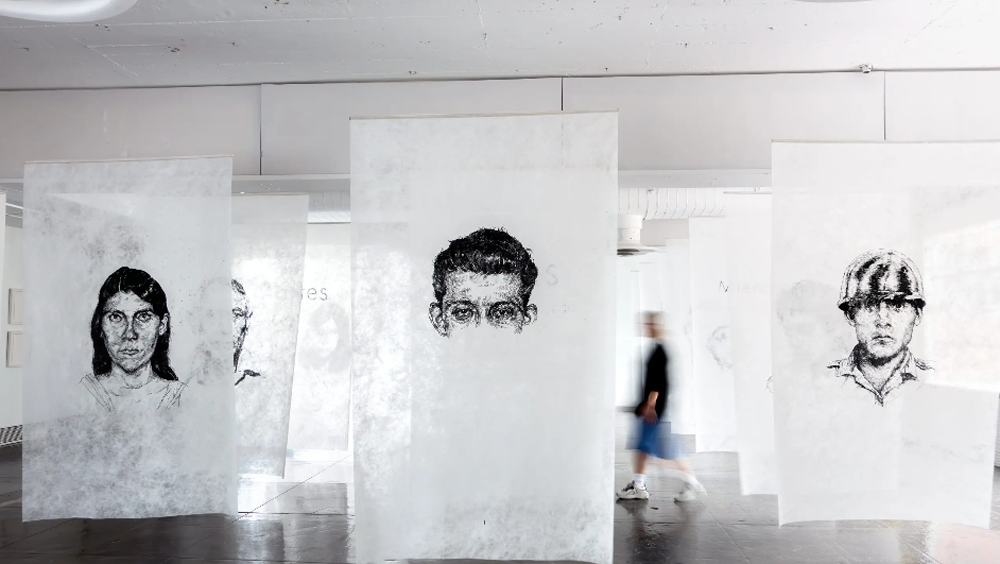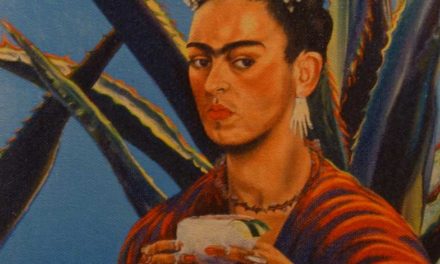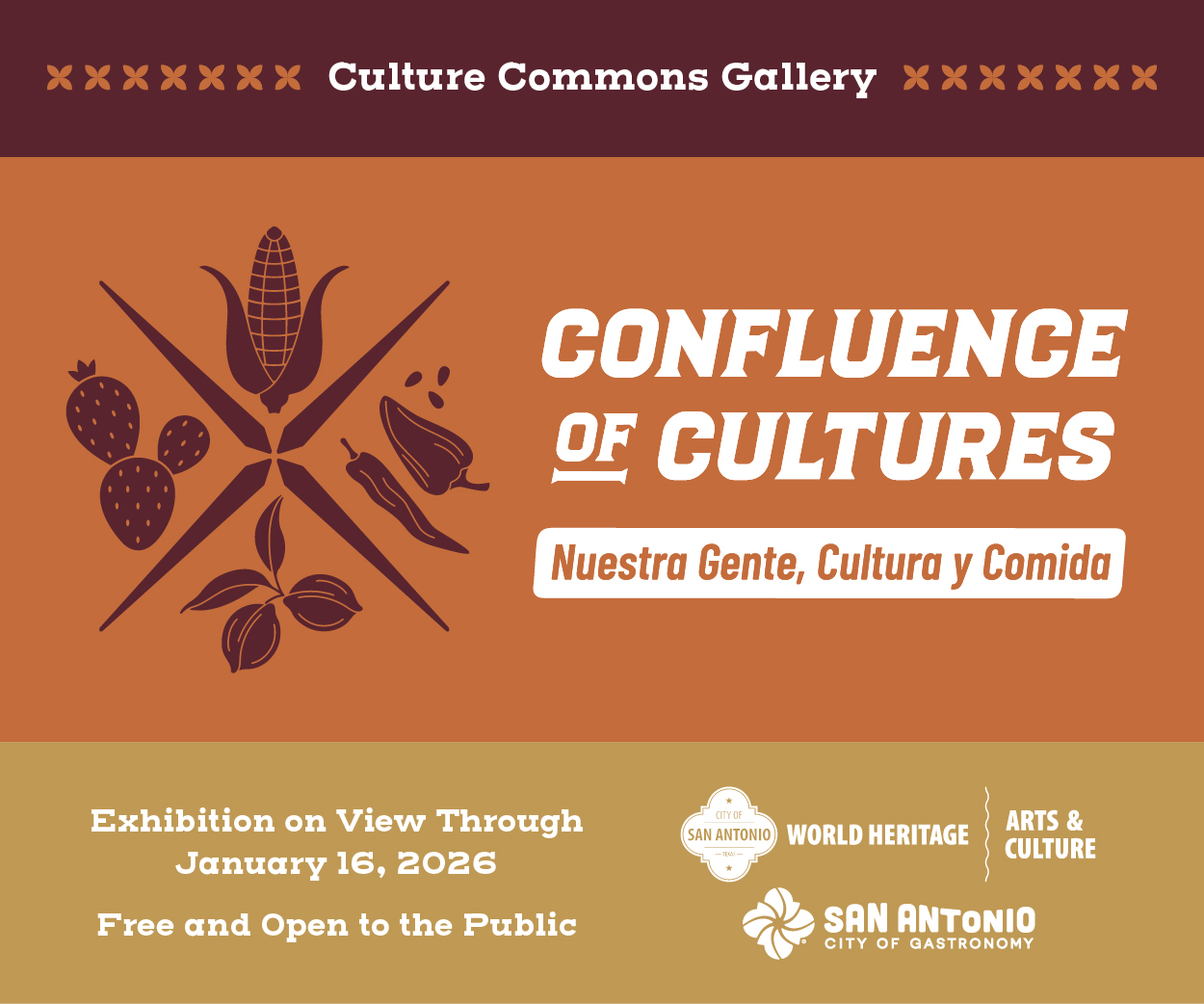Undercurrents marks a decade since Vincent Valdez’s last exhibition in San Antonio. His series, The Strangest Fruit, opened at Artpace in 2014. This selection of work departs from a singular focus on Valdez’s oeuvre, instead fostering a dialogue between artistic generations. By exhibiting alongside artists who have profoundly impacted his early trajectory, Valdez acknowledges the vital role of artistic lineage in his creative practice. This approach gives viewers an intimate look into Valdez’s personal art historical canon which features a heavy emphasis on protest imagery, artists who subvert political power structures, and the rich tapestry of Chicano art of his home state.
The exhibition unfolds in two distinct sections. The first space presents a salon-style, floor-to-ceiling arrangement showcasing works by over thirty artists, alongside various artifacts from Valdez’s personal collection. This immersive presentation allows viewers to draw connections between Valdez’s earlier works and those presented alongside them, fostering a deeper understanding of his artistic evolution. Many of the included artists, such as Adriana Corral, Cesar Martinez, John Hernandez, Juan Ramos, Tracy Moffatt, Peter Saul, and Kathy Vargas have their own ties to Artpace, highlighting the organization’s long-standing commitment to amplifying underrepresented voices.
Transitioning to the Hudson Showroom, the focus shifts to the political tensions between the Americas. Siete Dias/Seven Days, a powerful installation by Valdez, confronts viewers upon entry. This piece features twenty-one suspended banners depicting haunting portraits of individuals who have disappeared in Central and South America since the 1970s. Drawn from archival calendars, these figures are arranged in a chapel-like formation, emphasizing the collective loss and ongoing search for answers surrounding their disappearances. Interspersed among the portraits are seven text panels in Spanish, representing each day of the week, serving as a poignant reminder of the passage of time and the enduring absence of these individuals.
The perimeter walls of the gallery offer a counterpoint to the banners. Here, viewers encounter January 6th Selfie, a massive graphite drawing by Valdez’s early mentor and longtime friend, Rubio, depicting the chaotic events of January 6th, 2021, in Washington, DC. The undulating masses of bodies evoke the unsettling reality of that day’s acts of treason. On another wall, Valdez’s Since 1977, a series of lithographs picturing the seven presidents who have occupied the executive office from the artist’s birth year to the completion of the series in 2019, is poised in direct conversation with a folk artist’s clay figurines of the Mexican presidents.
In addition, a series of black and white lithographs by Luis Jimenez showcases the struggles of immigrants seeking a better life across the border and the devastating impact of war. Next to this grouping is Adriana Corral’s English translation of Latitudes, a series of blind debossed etchings of the Universal Declaration of Human Rights (UDHR), which Corral created while in Residency at Artpace in 2016.
Kathy Vargas, also an important early mentor of Valdez’s and whose work is displayed throughout the exhibition, once said that to be Chicano is to “owe and have strength from a specific community.” This exhibition seeks to embody that ethos and share Valdez’s gratitude and appreciation for his community.
Special thanks to Joe, Georgina, and Zoe Diaz for lending a portion of the Zoe Diaz Collection to this exhibition and their endless advocacy for Chicano and Latino art.







